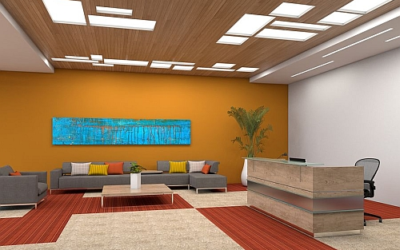The growing body of evidence showcasing physiological effects of light mediated by ipRGCs (intrinsically photosensitive retinal ganglion cells) has led to the emergence of spectral engineering to balance the desired visual and physiological effects of light, generally based on time of day (i.e. daytime spectrum and nighttime spectrum). However, end users and designers are left to decide what of this spectral engineering is worthwhile and what is marketing fluff. In order to truly find out, we must investigate the interaction between the visual sensitivities and the physiological sensitivity.
Human Lighting Perspectives
Hear fresh takes from the experts on what’s next for the future of circadian lighting.
Three Trends to Anticipate with Circadian Lighting
Public perceptions of circadian lighting—lighting based on our natural biology —have evolved considerably in the past year. In this article, light scientist Robert Soler writes that many people are starting to wake up to the health benefits of biologically-based lighting. Three trends stand out in recent studies: Reduced skepticism of the benefit of circadian lighting, the recognition of “social jet lag” (which afflicts 87% of the population), and a desire to prevent the domino effect of bad lighting practice by paying more attention to circadian options.
Prescription Lighting – Biological Lighting
This 24-minute video features Mariana Figueiro from the Lighting Research Center and Robert Soler offering their ideas about Prescription Lighting to Randy Reid of the EdisonReport. The panel discussion covers “prescriptive lighting” and the importance of the intensity of the light, the amount of light, how the light is distributed, when the exposure occurs, and “optic history,” an individual’s daily exposure to natural light.
Circadian Lighting – A Call to Arms
Over many millennia, peoples’ biological cycles have evolved and been closely intertwined with natural cycles of sunlight and darkness. Only in relatively recent times have technologies developed that interfere with these patterns, often with deleterious effects (up to 87% of workers suffer some kind of circadian disruption). In this article, light scientist Robert Soler explores important facets of light, the way that it affects us during the day, and how to calculate optimum levels related to both light spectrum and luminance.

